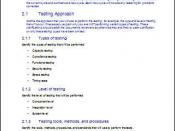INTRODUCTION
The purpose of this paper is to provide a means to minimize or eliminate double taxation through double taxation relief, to reduce the risk of under taxation by promoting cooperation among countries. As far as we know lower overall taxation encourages trade and investment as well as opportunity for growth and profits. The possibility of double taxation arises when two or more countries claim simultaneous jurisdiction to tax the same income. There is some debate in a number of jurisdictions in which every government involved in international commerce act: whether a double tax agreement can have the effect of imposing a liability to tax where none existed under domestic legislation or whether such an agreement is restricted in scope to providing relief from tax (methods).
Tax treaties represent one of the important aspects of international tax rules of most countries. The basic provisions are common to most countries and the overwhelming majority of these agreements based on the Model Tax Convention developed by the Organization of Economic Cooperation and Development (OECD) Model Treaty, the UN Model Treaty which includes some more provisions that are not mentioned in OECD.
I. METHODS OF RELIEF FROM DOUBLE TAXATION
The major problem of double taxation includes the country of residence forgoing its taxing rights either wholly or in part, in exchange for the country of source moderating its own claims. The source country's right has priority over the taxpayer's country of citizenship by reducing the rate of withholding tax applicable to dividends, royalties and interest payable to such resident. The taxpayer "home" country would then provide relief if it's taxing jurisdiction (based on residence/citizenship) intersects the source jurisdiction right. There is no international consensus that dictates the appropriate relief methods. However countries commonly use three:
1.the deduction method
2.the exemption method
3.the credit...


